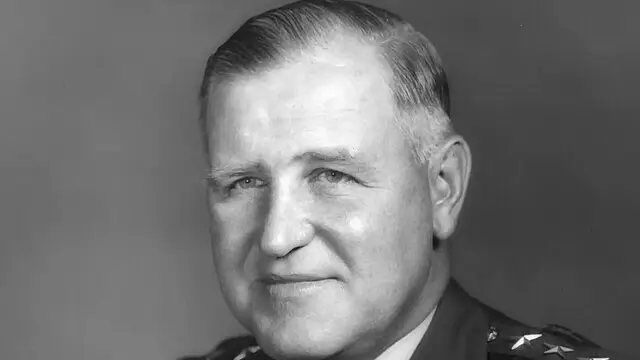Creighton Williams Abrams Jr. stands as one of the most respected and impactful figures in the history of the United States Army. He led with extraordinary leadership, tactical brilliance, and relentless dedication to duty from the pre-WWII era through the Vietnam War and the height of the Cold War. From commanding tank battalions across war-torn Europe to reshaping U.S. Army policy as Chief of Staff, Abrams left a legacy so profound that the Army named its most formidable tank, the M1 Abrams, after him.
Early Career and Rise Through the Ranks
Born on September 15, 1914, Creighton Abrams graduated from the United States Military Academy at West Point in 1936, joining a class that included future military legends like Benjamin O. Davis Jr. and William Westmoreland. Though he ranked 185th out of 276, Abrams’s passion for leadership and battlefield tactics would soon shine through.
He began his career with the 1st Cavalry Division and, by 1940, had transitioned into the newly developing armored warfare branch. Abrams quickly proved his mettle as a tank company commander in the 1st Armored Division, setting the foundation for what would become a legendary reputation in mechanized combat.
World War II: A Tank Commander Like No Other
Abrams’s real rise to fame came during World War II, particularly with the 4th Armored Division. Commanding the 37th Tank Battalion, he became synonymous with aggressive, high-speed armored warfare. Known for his ability to outmaneuver and outfight better-equipped German forces, Abrams led his men with unmatched intensity and courage.
His leadership was pivotal during the Battle of the Bulge, where his unit helped break the German siege of Bastogne and rescue the besieged 101st Airborne Division. General George Patton, no stranger to battlefield brilliance, once said, “I’m supposed to be the best tank commander in the Army, but I have one peer, Abe Abrams. He’s the world champion.”
Twice awarded the Distinguished Service Cross for extraordinary heroism, Abrams became a hero not just to his troops but to an entire nation at war. His battlefield exploits were even featured in a 1945 Life magazine article titled “Colonel Abe.”
Cold War and the Korean War
After World War II, Abrams continued to shape military strategy during the early Cold War years. He served on the Army General Staff and held numerous command positions in Europe, including leadership of the 63rd Tank Battalion and the 2nd Armored Cavalry Regiment.
Although Abrams joined the Korean War effort late, he made a significant impact as chief of staff for three different corps between 1953 and 1954. The Army quickly recognized his leadership skills, assigning him post-Korea roles that reflected their growing trust in his abilities. Abrams was not just a skilled field commander, but also an influential policy maker. His strategic thinking helped shape the future of the U.S. Army.
He was later promoted to brigadier general and served in critical roles at the Pentagon. Notably, he helped coordinate military efforts during the civil rights movement, overseeing federal troop deployments during the integration of the University of Mississippi and the protests in Birmingham, Alabama.
Vietnam War: A New Kind of War
In 1968, Abrams succeeded his West Point classmate William Westmoreland as commander of U.S. forces in Vietnam. Unlike Westmoreland, who focused heavily on search-and-destroy missions, Abrams shifted the strategy to emphasize counterinsurgency efforts. He sought to win the “hearts and minds” of the Vietnamese people, focusing on their needs and concerns. This approach marked a significant change in U.S. military tactics during the Vietnam War. It prioritized collaboration with local populations and stabilization over sheer military force.
Some critics argue that the differences between Abrams and his predecessor were overstated. However, Abrams implemented policies that reflected a nuanced understanding of Vietnam’s political and cultural complexities. Under his command, initiatives like the Civil Operations and Revolutionary Development Support (CORDS) program gained traction. The program aimed to improve rural security and governance, showcasing Abrams’ focus on counterinsurgency and local stability.
One of his most lasting contributions during this time was implementing President Nixon’s “Vietnamization” strategy. This approach gradually transferred military responsibilities to South Vietnamese forces while drawing down American troop levels, from over half a million in early 1969 to just 49,000 by mid-1972.
Abrams oversaw significant operations, including the Cambodian Incursion of 1970. He also managed the American response during the North Vietnamese Easter Offensive in 1972. While he faced criticism from both politicians and the media, President Nixon trusted Abrams and frequently sought his counsel.
Chief of Staff and Project VOLAR
In June 1972, despite growing political controversy surrounding the Vietnam War, Abrams was appointed Chief of Staff of the United States Army. His appointment came at a time of significant political tension and scrutiny. His tenure was marked by monumental structural changes, chief among them the shift to an all-volunteer army, Project VOLAR. This transition aimed to rebuild the Army’s strength and morale after years of conscription and unpopular war.
One of his most visionary moves was authorizing the formation of modern Ranger units. On July 1, 1974, the Army activated the 1st Battalion (Ranger), 75th Infantry at Fort Stewart, Georgia. These elite forces were swift, lethal, and specialized, embodying Abrams’s bold battlefield style.
Creighton Abrams Jr.: A Lasting Legacy
Abrams passed away on September 4, 1974, just days before his 60th birthday. At the time, he was still serving as Chief of Staff. His death came suddenly and shocked many. It was a significant blow to the Army, which had come to rely on his steady leadership during one of its most turbulent periods.
In honor of his service, the U.S. Army named its new main battle tank the M1 Abrams in 1980. Like the man it was named for, the tank symbolizes power, reliability, and strategic superiority. Additionally, the IG Farben building in Germany bore his name from 1975 to 1995, further cementing his international legacy.
Conclusion
General Creighton Abrams Jr. was more than a battlefield commander. He was a transformative figure whose influence shaped the modern U.S. Army. Abrams stormed across Europe in a Sherman tank, reshaped military doctrine in Vietnam, and laid the groundwork for the post-draft military. Throughout his career, he consistently displayed courage, intelligence, and an unwavering sense of duty.
Creighton Abrams Jr.’s leadership on the battlefield earned him the respect of his peers. Off the battlefield, he won the admiration of his troops. His legacy secured him a permanent place in American military history. Today, every time the M1 Abrams tank rolls into action, it carries the enduring spirit of one of America’s greatest generals.








